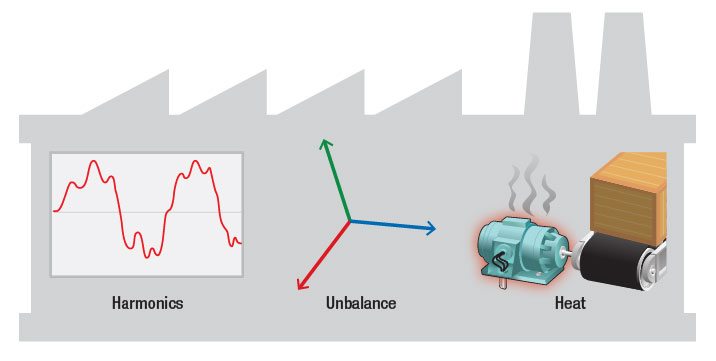 Since utilities rely so heavily on their assets operating efficiently, detecting energy waste and addressing equipment failure quickly is critical.
Since utilities rely so heavily on their assets operating efficiently, detecting energy waste and addressing equipment failure quickly is critical.
More than utility costs are at stake when it comes to energy waste. Some power quality-related problems, such as harmonics, can overstress conductors and windings, leading to premature equipment failure.
Detecting energy waste: Common causes and solutions
- Harmonics: One of the most recognized effects of harmonics in electrical systems is the excess heat they create in the conductors carrying them. There are also documented cases of transformers overheating because of the presence of harmonics. That heat is a form of unintentional power consumption. It’s possible to determine the amount of waste in watts, rather than heat. Studies have revealed the need to increase the size of neutral conductors in power systems to compensate for multiple harmonic currents.
- Load unbalance: Voltage unbalance at the motor stator terminals in turn causes phase current unbalance, which then leads to torque pulsations, increased vibration stress, mechanical stress and motor overheating. Each one of these effects consumes energy, quantifiable in watts. It’s therefore critical to conduct load studies on all main power supply points.
- Motor running hot: Motors often run hot, which can be due to any number of problems, from insufficient lubrication to alignment problems.
Energy waste solutions
- Repairing equipment
- Adjusting usage times
- Finding utility rebates for installing energy-efficient equipment
- Learn more about advanced energy analysis and monetarily quantified energy losses.
This blog post was drafted in partnership with Fluke Corporation. Check out Fluke’s original article, “3 hidden causes of industrial energy waste.”
Related posts
Vibration sensors detect faults, minimize equipment downtime
Infrared preventive maintenance monitors critical equipment temperature